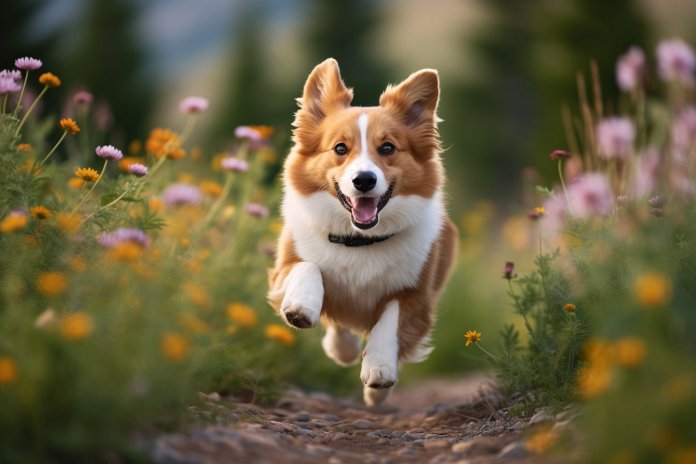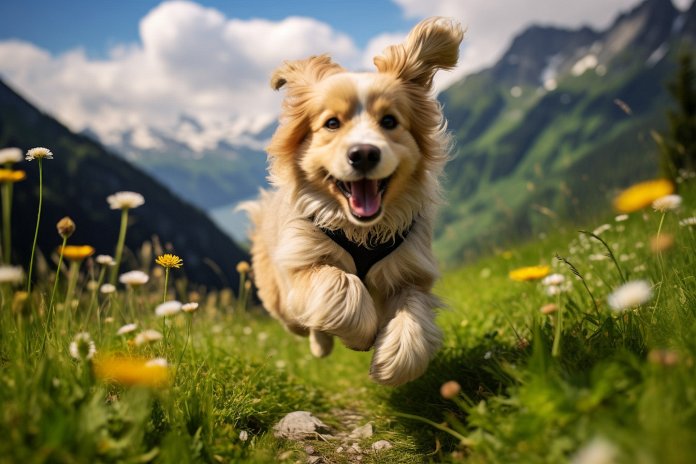
Some people love running, while others don’t. However, dogs always enjoy running freely whenever they can. Unlike humans who tire quickly, dogs seem to have endless energy. But even dogs have limits when it comes to running, and it’s important to recognize when they’ve reached their limit. Some dogs may try to keep going even when they shouldn’t, so it’s important to monitor them closely.
Signs Your Pup is Winded
After a run, your dog may exhibit signs of exhaustion. They may pant heavily, so make sure they have access to water to keep hydrated. Dogs regulate their body temperature through panting and through their paws, so they may also seek a cool spot to rest.
Body Language
Some signs that your dog is exhausted include panting, weakness, sweaty paws, and sleepiness. Other signs to watch for are collapsing, heavy breathing, extreme thirst, and a history of running around.
History of Dogs Running Around
Dogs have been domesticated for around 15,000 years, serving as companions and helpers to humans. In the past, dogs had to fend for themselves and relied on their natural abilities. Some breeds are better runners than others, but running has always been a defense mechanism and a way for dogs to burn energy.
The Science Behind a Dog’s Endurance
Siberian Huskies and Alaskan Malamutes have been used as sled dogs for thousands of years. Their bodies have adapted to handle the physical strain of pulling sleds. Dogs’ bodies react differently to exercise than humans do, and they can adapt and handle increased endurance with time.
Training Your Dog to Handle Endurance
Dogs handle exercise differently than humans, and they adapt their muscles to better handle physical strain. Keeping your dog active is important for their overall well-being. Training your dog to run alongside you or play fetch can help keep them active. However, training them to run on a leash can be challenging. It’s important to train them to stay by your side and not pull or run off in different directions. Use a shorter leash, follow the same route, provide positive reinforcement, and make running a regular part of their routine.
“Training your dog to run can be tricky, but with patience and consistency, they can become the perfect running partner.”

Tips & Things to Know
1️⃣ Dogs absolutely love running, but they do have limits. It’s important to keep an eye on them and look for signs of exhaustion such as panting, weakness, sweaty paws, sleepiness, collapsing, heavy breathing, and extreme thirst. Make sure their water bowl is always filled so they can hydrate after their run.
2️⃣ Different breeds of dogs have different running capabilities. While some dogs can run faster and longer than others, all dogs need to burn energy and enjoy the exercise. However, they may not always realize when they need to take a break, so it’s up to the owner to monitor their activity.
3️⃣ Training your dog to run alongside you can be a great way to keep them active, but it requires patience and consistency. Use a short leash to maintain control and take the same route each time to help them learn. Positive reinforcement with treats can also be beneficial, and try to run with them a few days each week to maintain their fitness level.
Frequently Asked Questions, Answered ✅
1. How can you tell if your dog is tired after running?
– Signs of exhaustion in dogs include panting, weakness, sweaty paws, and sleepiness.
2. Why do dogs love running?
– Dogs have a natural instinct to run and it helps them burn energy. They also enjoy the freedom and exercise it provides.
3. Can dogs handle endurance better than humans?
– Yes, dogs have the ability to adapt to the strain put on their bodies through exercise. Their muscles react differently than humans’, allowing them to handle endurance better.
4. How can you train your dog to run alongside you?
– Training your dog to run on a leash can be done by using a shorter leash, taking them on the same route, providing positive reinforcement with treats, and being consistent with their running routine.
5. What are some signs of exhaustion that require immediate attention?
– Collapsing, heavy breathing, and extreme thirst are signs that your dog may have run out of endurance and need immediate attention.